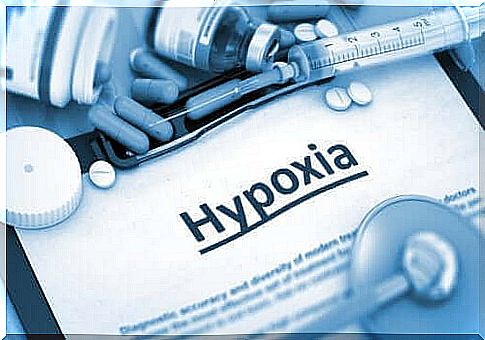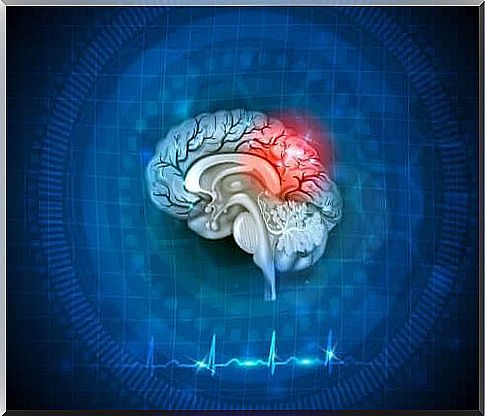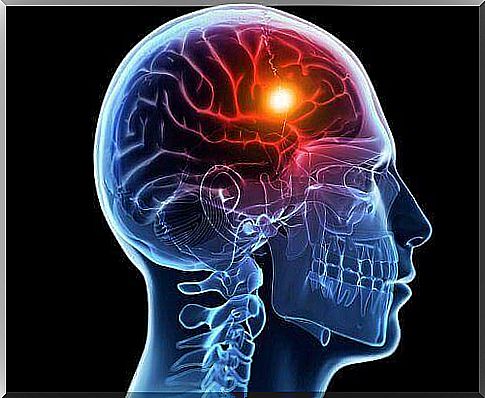Cerebral Hypoxia: Types And Causes

Cerebral hypoxia occurs when there is less flow of oxygen to the brain than is considered normal. A normal flow of oxygen allows the brain to function properly, according to the body’s requirements.
You need to understand that the brain is an organ whose functions must not stop. Different parts of the brain are activated at different times, but the rest of the components of the human body depend on their proper performance.
Due to the constant function of the brain, it uses a large amount of oxygen. In addition, oxygen passes through the arteries that distribute the blood from the neck up. If the blood decreases, so will the oxygen.
Lack of oxygen greatly affects the brain. The cells that use it start their death process when they have been without oxygen for about five minutes. This is known as a cerebral infarction and shows the relevance that an episode of cerebral hypoxia may have.
Causes of cerebral hypoxia
The causes of cerebral hypoxia vary. Sometimes it is just due to a reduction in oxygen that reaches the skull area. Other times, there is also a decrease in blood flow in addition to oxygen, with all this entails.
Some of the reasons:
- Elevations above sea level lead to a decrease in the oxygen available to the brain to function. This is altitude sickness associated with the practice of sports such as climbing and rock climbing.
- Carbon monoxide is the most important representative of gas poisoning. When it occurs, oxygen loses its place in the blood and carbon monoxide replaces it. In this way, cells throughout the body get an element that they cannot use for metabolism.
- Some pathologies, such as amyotrophic lateral sclerosis (ALS), attack, for example, the brain’s respiratory center and paralyze the airways. When the respiratory mechanism fails, less oxygen enters and it causes a suffocation-like mechanism.
- Choking, either intentionally with criminal motives or accidentally, both cause cerebral hypoxia. Tightening your neck, drowning with fluids and inhaling smoke from a fire are some of the different forms of suffocation.
- Arterial hypotension occurs when blood pressure drops too low and becomes insufficient to irrigate all body tissues, especially those furthest from the heart. The brain is one of the areas affected by this.
- Any heart disease that limits your normal pumping capacity and pace can lead to cerebral hypoxia. It can be an acute event, such as a heart attack or a chronic situation such as arrhythmias.
- Stroke produces cerebral hypoxia in certain regions, either due to clogging of a cerebral artery with a blood clot or due to part of the blood vessels in the brain fractures and causing bleeding.

Types of presentation
Cerebral hypoxia can be classified depending on the affected area of the brain. Some hypoxic episodes only damage cells at a specific point in the brain, while there are times when the general flow stops.
Thus, these are the types of cerebral hypoxia:
- Focal. In this case, cerebral hypoxia is punctual. The classic example is a stroke that originates in a blood clot that clogs a cerebral artery.
- Diffuse. This is a reduction in cerebral oxygen flow that occurs evenly throughout the brain, without becoming too severe. The functions of the brain cells decrease, but infarction rarely occurs.
- Global. In this, the reduction affects the whole brain. The lack of oxygen is so noticeable that cells die. The subsequent symptoms are according to the affected brain area.
- Gigantic. This is the maximum expression of cerebral hypoxia, where large areas of the brain get a heart attack at the same time, which puts subsequent recovery and life in danger.

Symptoms of cerebral hypoxia
Although the symptoms of cerebral hypoxia depend on how long the lack of oxygen lasts, some of the signs are quite peculiar. As we mentioned above, hypoxia in a few seconds will not leave sequels, but if it extends over five minutes, there will certainly be a stroke.
There may be a lack of attention, some memory loss, strange sensations in the extremities of the body and speech difficulties after immediate cerebral hypoxia. There may also be limited movement similar to paralysis.
If the lack of oxygen flow lasts longer, there will be subsequent seizures, fainting with loss of consciousness and the person may even end up in a coma. At this point, emergency care becomes absolutely necessary, as the person will need immediate life-saving measures from a medical team.
If cerebral hypoxia exceeds five minutes, it will trigger a heart attack. A small heart attack can lead to a later improvement with rehabilitation, but a massive heart attack can lead to the death of the whole brain.
So you need to consult a doctor if you experience any neurological symptoms. Similarly, if a person faints and does not react immediately or have seizures, then the right step is to contact an ambulance that can help them quickly.









